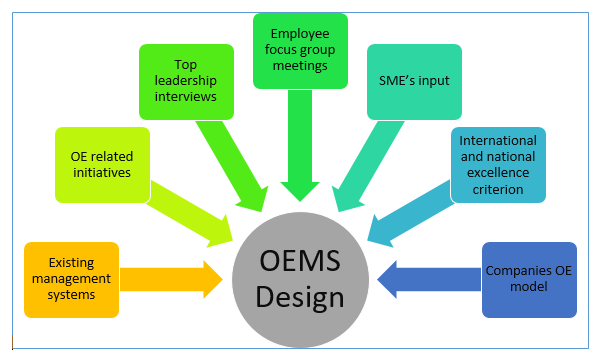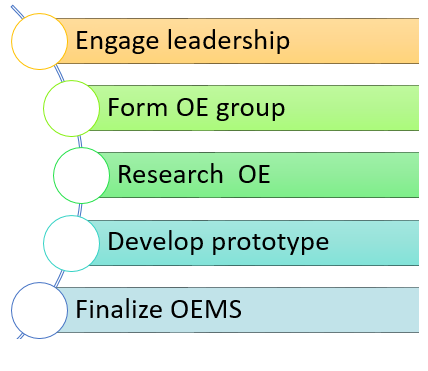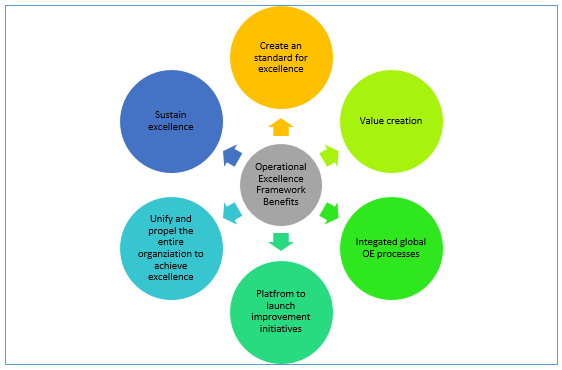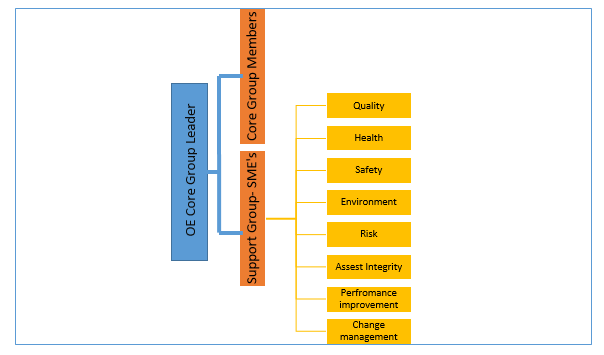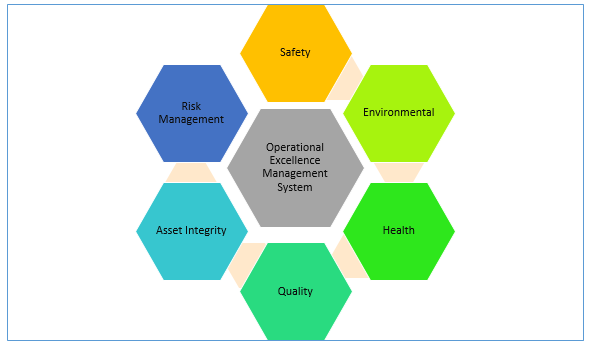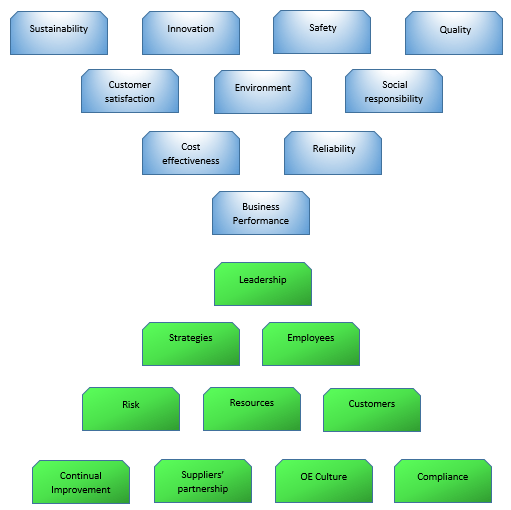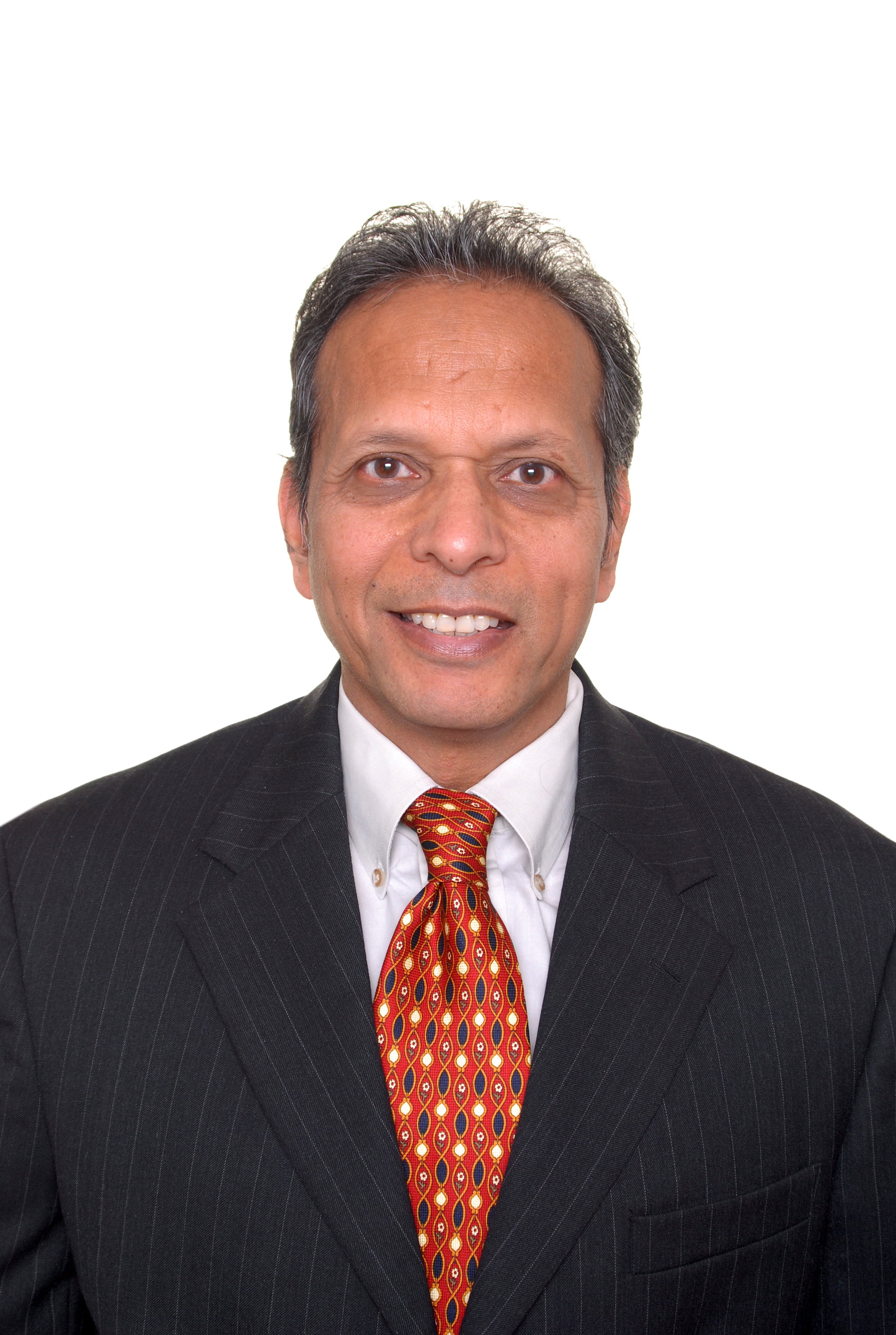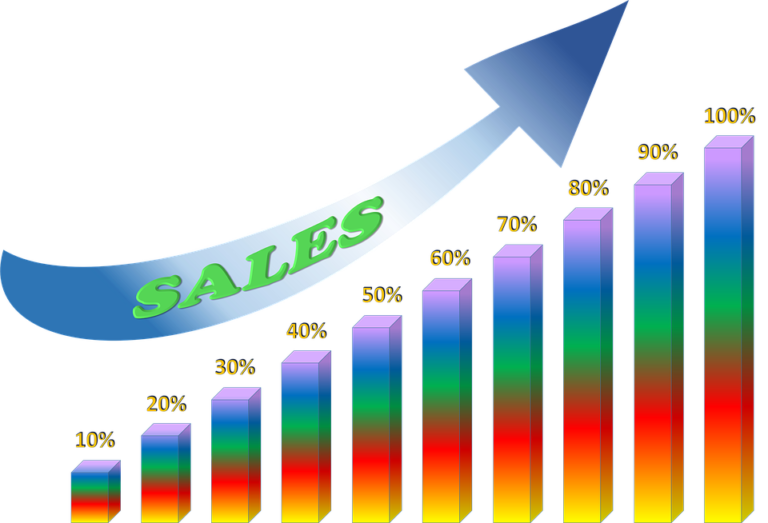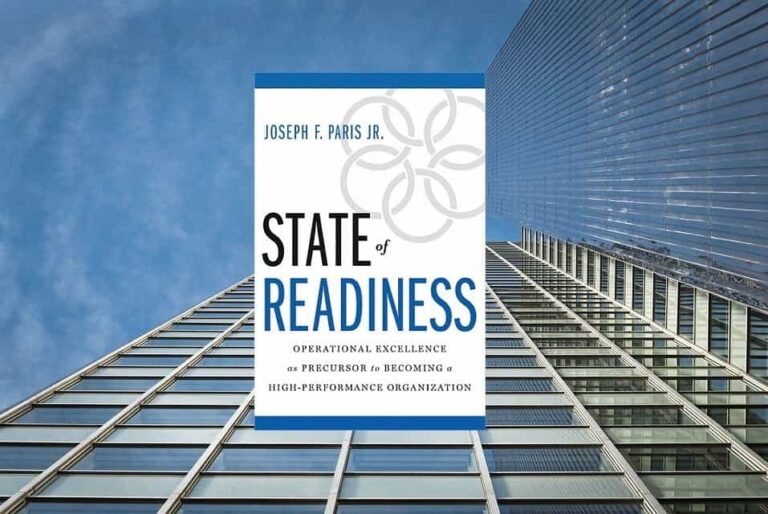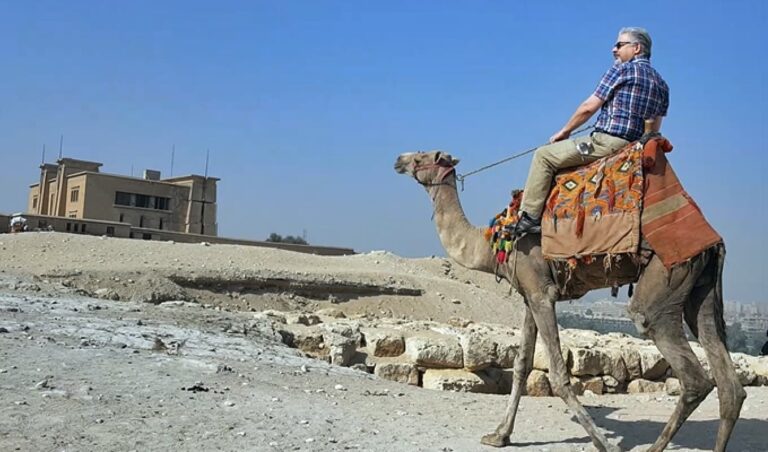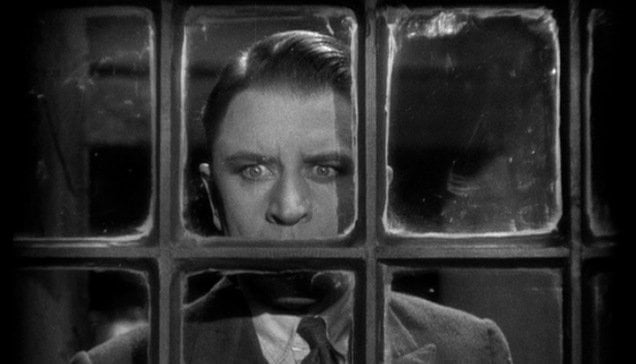Power your Performance: “How-to” Design an Operational Excellence Management System (OEMS)
Steps for DESIGNING AN OPERATIONAL EXCELLENCE MANAGEMENT SYSTEM (OEMS):
Operational Excellence (OE):
What is OE? Extensive research on OE related literature led me to the conclusion that there are many definitions of OE. Below are some definitions that are more commonly used:
Definition 1: OE is an all-encompassing management system, covering the entire business with a goal to achieve world-class performance in critical areas of the business.
Definition 2: OE aims to achieve world-class performance in all key areas of the business within the guardrails of values of the organization.
Definition 3: A philosophy of the workplace where problem-solving, teamwork, and visionary leadership results in ongoing improvement. The process involves focusing on customers’ needs, employee’s empowerment, and continually improving current activities (1).
The various OE definitions are due to the fact that organizations differ in vision, mission, strategic goals and areas that are critical for an organization to achieve excellent business results over an extended period of time. However, one common thread among all definitions is to achieve and sustain excellence. To give OE the feel, flavor, and touch of the organization, it is best to carve your own definition of OE. Some of the attributes of a good OE definition are:
- Pertinence to focus areas of the organization
- Pertinence to the work of the people
- Include stretched goal(s)
- Easy to understand
- Likable
What is an excellent organization? An excellent organization is defined as one that can achieve and sustain excellent results beyond all stakeholders’ expectations.
What is an Operational Excellence Management System (OEMS)? A typical OEMS consists of Focus areas and Enabling Elements. Focus areas are those essential areas that are critical for an organization to achieve excellent business results over an extended period of time. Enabling elements are organizational domains such as management systems, processes, capabilities, resources, technologies, business characteristics etc. that an organization must have to achieve sustainable world class performance. OEMS drives the excellence engine to achieve world class performance.
OE Benefits:
There have been numerous studies done to demonstrate benefits of developing and implementing an Operational Excellence (OE) framework. Some of them are highlighted below:
- Research report on “Impact of Business Excellence/Quality Awards on Enterprises”:
The aim of this research paper is to identify the performance results and outcomes achieved by organizations that used a business excellence framework in Asian Productivity Organization (APO) countries. One of the findings from the research report was, on the whole, business excellence is perceived to have a major impact on competitiveness and performance of organizations (2). Details of this report can be found on the APO website: http://www.apo-tokyo.org/.
- Bull or Bear? – The Q100 Index Proves That If You Have Quality You’ll Beat The Market:
In this study approximately 100 of the 500 S&P companies were selected based on quality from the Q-100 index. The study showed that from Sept. 30, 1998, to Dec. 31, 2001, the Q-100 returned 26.97% compared with the S&P 500’s return of 17.59%. The study concluded that “the performance of the Q-100 in both bull and bear markets suggests quality improvement efforts have a direct and measurable impact on stock performance (3).” Details of this report can be found in the American Society for Quality (ASQ), Quality Progress publication of April, 2002.
- Baldrige Award Winners Beat the S&P 500 – Study Shows Quality Results in Increased Shareholder Value:
This study examined the impact on stock market performance of the publicly traded MBNQA award winner companies. The study concluded that MBNQA award winning companies as a group outperformed the stock exchange market (4). Details of this report can be found in the American Society for Quality (ASQ), Quality Progress publication of April, 1999.
- Don’t Count TQM Out: Evidence Shows Implementation Pays Off in a Big Way:
In this study the performance of quality award winning companies was compared with control firms that were in the same industry and about the same size in assets. The study concluded that, for the five years TQM post implementation period (one year before winning the award and four years after the quality award) the winners on average experienced higher growth in operating income, increase in sales, increase in total assets and increase in number of employees compared to control firms. Details of this study can be found in the paper written by Hendricks, K.B & Singhal, V.R (5).
In summary, there are numerous benefits of an OE framework including (Figure 1):
- Creating a standard for excellence
- Value creation for customers and shareholders.
- Integrated global OE processes that can be applied to all business units and joint ventures to provide consistent, quality of goods and services to all customers
- Acts as a jell to unify and propel the entire organization to achieve excellence
- Provides a platform to launch corporate-level improvement initiatives. This prevents duplication of efforts by different business units launching similar initiatives. The below example may further clarify this point.
Example 1: Environmental improvement initiative launched simultaneously by a gas processing plant and a downstream unit without coordination and sharing of knowledge.
Articles highlighting the impact of OE on organizations can be found at the ASQ Quality Management Division, Organizational Excellence Technical Committee website (6).
FIGURE 1: OE framework benefits
Operational Excellence Management System (OEMS) Design:
A collaborative design of OEMS consists of five major steps (Figure 2):
- Involving top leadership
- Forming an OE core group
- Researching OE related systems
- Developing a prototype model of OEMS
- Finalizing and publishing OEMS
FIGURE 2: OEMS design steps
Involving top leadership:
Make a mental note that “OE IS DRIVEN from the top by the LEADERSHIP and from the bottom by EMPLOYEES”. Therefore, it is imperative to win the support of the organization’s top leadership to design a pragmatic OEMS that can be implemented as a way of life (supported by employees) for the entire organization rather than becoming a slogan or flavor of the month. The strong support for OE is evident in messages of the leader of some of the world’s leading organizations. Some examples are shared below:
- ExxonMobil operations integrity management systems: “ExxonMobil remains steadfast in its commitment to excellence in safety, security, health and environmental (SSHE) performance.” Rex W. Tillerson- Chairman and Chief Executive Officer of ExxonMobil Corporation.
- Chevron operational excellence management system (OEMS): “I am a strong and tireless advocate for operational excellence”. Dave O Reilly-Chairman and CEO of Chevron Corporation.
- The Statoil Book “Each and every one of us must pursue the highest standards of excellence in all areas of our business.” Eldar Saetre-President and CEO of Statoil.
Conducting a preliminary OE assessment can help in identifying gaps that can be used to buy-in top management’s support. Some of these gaps are highlighted below:
- Lack of common understanding of OE
- Silos of functions and procedures hindering effective implementation of OE
- Lack of OE expertise and talent
- No unified performance measurement
- Fragmented performance measurement systems
- Reliability
A “steering committee” led by a high level executive as a champion and middle level managers as members can provide necessary support and guidance during the design of OEMS. Develop an execution plan, secure budget and other resources needed for the initiative to ensure timely completion of the initiative.
Forming an OE group (Figure 3):
It is recommended to form an OE group from the very onset. This group should be responsible for developing the complete OE Framework consisting of OEMS, OE governance, implementation, assessment and continual improvement. The group consists of a permanent core group and an interim support group. The core group consist of a leader and team members who have an expertise in OE. The support group consist of subject matter experts from quality, health, safety, environment, risk management, asset integrity, business performance improvement, change management and other functions as deemed necessary by the OE core group. Organize a corporate level event to formally launch the OE framework initiative. It is highly recommended that the top leadership involvement is prolifically visible in this event. Invite all OE stakeholders in this ceremony such as Heads of operating business units, Heads of support units (Planning and strategy, Engineering, HR, Maintenance, etc.), middle level management personnel, relevant Subject Matter Experts, IT function personnel and others, as needed.
FIGURE 3: OE group structure
Collecting data on OEMS related programs (Figure 4):
The development of OEMS starts with an exploration journey that require input from many sources such as:
- Existing management systems
- OE related initiatives
- Top leadership interviews
- Employee focus group meetings
- SME’s input
- International and national excellence criterion
- Companies OE models
FIGURE 4: Inputs to OEMS design
Collect data on existing OE related management systems, initiatives, visions, missions, values, policies, processes, performance measurement systems, assessment programs and other elements that are crucial for detailed design of your organization OEMS. The exploration journey is followed by bringing alignment between various OE systems to eliminate duplication and bridge gaps. Commonly used OE related systems in a typical Oil and Gas organization consist of (Figure 5):
- Safety Management System
- Environment Management System
- Health Management System
- Quality Management System
- Asset Integrity Management System
- Risk Management System
FIGURE 5: Operational Excellence Management System (OEMS) related systems
Capitalize on current successes in OE. During your exploration journey you may find that there are silos of excellence throughout the organization. Bring them under the OE umbrella as “early wins”. Similarly improvement initiatives such as Six Sigma, waste reduction, benchmarking and others can also be brought under the OEMS umbrella.
Interview selected groups of employees at all levels to collect key input for the detailed design of OEMS.
Study of International Excellence Models may also provide valuable insights in design of OEMS. Some examples of well-known international excellence models are given below:
- Malcolm Baldrige Excellence Award (MBNQA) (7). Figure 6
- EFQM European Excellence Award (8). Figure 7
- The Deming Prize (9).
FIGURE 6: Malcolm Baldrige National Quality Award (MBNQA) (2).
A brief description of MBNQA and EFQM is provided below. Further information on MBNQA can be found at the NIST website (www.nist.gov), EFQM website (www.efqm.org), and Union of Japanese Scientists and Engineers website (www.juse.or.jp/).
Malcolm Baldrige National Quality Award (MBNQA):
The MBNQA consists of seven excellence categories and 17 excellence criteria items. Seven categories are:
- Leadership
- Strategy
- Customers
- Measurement, analysis, and knowledge management
- Workforce
- Operations and
- Results
These seven excellence categories are further divided into criteria items. There are total of 17 excellence criteria items. Some are shown below:
- Senior leadership
- Strategy development
- Voice of the customer
- Measurement, analysis, and improvement of organizational performance
- Workforce environment
- Work processes
- Product and process results
Operational Excellence (OE) is not specifically referenced in the MBNQA. However OE directly impacts in a significant way some core area outcomes of the MBNQA such as “Workforce”, “Operations”-in terms of the industry leadership in reliability, efficiency, safety and environment” and “Results”-specifically performance, profitability and technical innovation. Moreover some essential elements of OE are embedded in MBNQA such as “leadership”, “measurement, analysis, & knowledge management”, and “Customers”.
European Foundation for Quality Management (EFQM) Award:
The EFQM Excellence model consists of nine excellence criteria categorized as enablers and results. There are five enablers and four results criteria. The feedback loop from results achieved to enablers is provided through learning, creativity and innovation.
EFQM Enablers:
- Leadership
- People
- Strategy
- Partnerships
- Processes, products and services
EFQM Results:
- People
- Customer
- Society
- Business results
FIGURE 7: European Foundation for Quality Management (EFQM) Excellence Award (3).
The Deming Prize:
The Deming prize is awarded to those organizations that establishes and achieves customer-oriented business objectives and strategies by implementing TQM. A prerequisite to apply for the Deming award is a TQM diagnosis by the Deming Prize Committee.
In addition to aforementioned (MBNQA, EFQM and the Deming Award) International excellence awards, many countries have developed their own excellence criteria and awards to recognize World class organizations. Some examples of these models are given below:
- Dubai Quality Award (10)
- UK Business Excellence Award (11)
- Canada Awards for Excellence (12)
- Australian Business Excellence Award (13)
Include in your research of international and national excellence models a study of companies’ excellence models as well. Some examples of well-known companies’ excellence models are given below:
- Operations Integrity Management System, ExxonMobil (14)
- Operational Excellence Management System, Chevron (15)
- Stat Oil (16)
- Operational Excellence, Shell
- Operational Excellence, DuPont
Developing a prototype model of Operational Excellence Management System (OEMS):
Consolidate and analyze all the above data to develop a prototype of OEMS consisting of focus areas and enabling elements. This is an excellent opportunity to eliminate redundancies and conflicting requirements among management systems by streamlining and integrating all existing management systems. Enabling elements such as leadership, resources, and root cause analysis may be common amongst the Quality system, Safety system, and others. See an example of redundant requirement between a Safety System and an Asset Integrity system below:
Example 2: One of the objectives of the Asset Integrity Management System is to ensure that emergency plans to respond to undesirable events are developed and implemented. This overlaps with the Safety Management System element of emergency readiness.
In developing the prototype model of OEMS ensure that:
- It is a product of the collective efforts of all OE stakeholders (leadership, people, customers, society etc.)
- Partner with those organizations (safety, environment etc.) that own management systems that are considered as elements of excellence and jointly develop the OEMS model.
Finalizing the Operational Excellence Management System (OEMS):
In many companies you will find that there are fragmented approaches to achieving excellence in key focus areas such as production, quality, safety, environment, reliability etc. This will be an excellent opportunity to bring all these initiatives under one umbrella of a corporate wide excellence system. It is crucial to vet the OEMS using a two-step process to ensure its relevance and practicality. The first step is sharing it bottom-up, top down, and across the organization. The next step is to plan, schedule, and conduct OEMS- detailed reviews with relevant SME’s, all heads of departments, selected groups of employees from each department, and executive management. If vetting is done adequately, it will ensure the buy-in, effective implementation, and success of OEMS in achieving focus area targets. Based on the feedback, refine the OEMS. Finally, share it with the steering committee that approved the OE framework initiative to seek their advice, and share challenges and threats in achieving objectives. Further refine the model by incorporating the feedback. Use this opportunity to standardize systems and its processes.
Some common attributes of OEMS are listed below:
- Excellence criterion should be practical to deploy.
- Applicable to both core (e.g. oil production) and support processes (e.g. HR).
- Provide a mechanism to accelerate performance excellence transformation, continual improvement and sharing of best practices throughout the corporation.
- Comprehensiveness and flexibility to measure excellence on performance parameters that a business entity has control over e.g. quality, safety, environment, cost, and assets efficiency.
- The model should be broad and flexible to be applicable to complex operations such as petrochemical production as well as simple operations such as distribution.
As a last step to complete the design process, finalize the model and publish it across the corporation.
OEMS should be an overarching management system within which all business improvement initiatives related to safety, health, environment, quality, profitability, and security can fit. Below are some guidelines on components of OEMS:
OEMS focus areas (Figure 8):
- Business performance
- Sustainability
- Innovation
- Safety
- Quality
- Cost effectiveness
- Customer satisfaction
- Environment
- Social responsibility
- Reliability
OEMS enabling elements (Figure 9):
- Leadership
- Strategies and policies
- Employees
- Systems/ Processes
- Resources
- Customers
- Technology
- Continuous Improvement
- Assets integrity
- Suppliers partnership
- Change management
- OE culture
- Employee engagement/ empowerment
- Knowledge sharing and management
- Risk
- Compliance
FIGURE 8: OEMS Focus Areas
FIGURE 9: OEMS Enabling Elements
Conclusion: World Class performance cannot be achieved with a fragmented excellence management system, programs and initiatives pursued by different functions (e.g. R&D and supply chain) at different levels (e.g. strategic planning and maintenance) of the organization.
Like any other transformation programs, transition from a fragmented management system to a unified, standardized and a global Operational Excellence Management System (OEMS) is full of challenges. One of the biggest challenge that organization faces in designing an OEMS is the alignment of existing OE related management systems. In regulated industries (e.g. chemicals and oil & gas) the safety management system is usually the oldest one because of strict compliance requirements by regulatory bodies going back to the 1980’s -the decade when two major disasters took place. In 1984, it was the Bhopal gas tragedy and five years later, the Valdez Oil spill. There are different techniques available to integrate and align OE related management systems. Another major challenge is the integration of various assessments i.e. safety, quality, risk, assets integrity, inspection etc. into a “ONE ASSESSMENT” approach.
Along with the OEMS which establishes a standard for excellence for the enterprise, an assessment tool, a performance measurement mechanism and a governance structure are needed to complete the OE framework. The standard for excellence will integrate and align all existing excellence management systems, programs and initiatives pursued by different entities within the company under one umbrella. It will provide a common language for OE across the company for core and support processes. An assessment tool will enable the organization to measure progress towards achieving excellent results in all focus areas. It will help to evaluate effectiveness of processes, align activities to optimize performance and focus resources to achieve excellent results. The performance measurement system is an integral element of the OE framework. It provides the criteria for measuring, recording & tracking results, and a feedback mechanism to continually improve results. Governance provides the needed organizational structure as well as identification of resources and methods needed to deploy the OEMS corporate wide.
References:
- Business dictionary (http://www.businessdictionary.com/definition/operational-excellence.html)
- Impact of Business Excellence/Quality Awards on Enterprises. http://www.apo-tokyo.org/00e-books/IS-47_2011/ind_ibeqae-2011.pdf.
- George, S (2002) Bull or Bear? : The Q100 Index Proves That If You Have Quality You’ll Beat The Market, Quality Progress, 2002, April, pp 32-37.
- Tai, L. S & Przasnyski, Z. H (1999) Baldrige Award Winners Beat the S&P 500: Study Shows Quality Results in Increased Shareholder Value, Quality Progress, April, pp 45-51.
- Hendricks, K.B & Singhal, V.R (1999) Don’t Count TQM Out: Evidence Shows Implementation Pays Off in a Big Way, Quality Progress, April, pp 35-42
- List of organizational impact papers, file:///C:/Users/MC%20Guest/Downloads/1328282770_List_of_Organizational_Excellence_Impact_Papers.pdf
- http://www.nist.gov/baldrige/publications/business_nonprofit_criteria.cfm
- http://www.efqm.org/efqm-model/model-criteria
- https://www.juse.or.jp/deming_en/award/03.html
- http://www.dubaided.ae/English/businessawards/dubaiqualityaward/Pages/default.aspx.
- https://www.bqf.org.uk/what-we-do/awards/uk-excellence-award/.
- http://excellence.ca/en/awards/about-the-canada-awards-for-excellence/Overview%20and%20Benefits.
- https://www.saiglobal.com/business-improvement/solutions/australianbusinessexcellenceframework.htm
- http://corporate.exxonmobil.com/en/company/about-us/safety-and-health/operations-integrity-management-system
- https://www.chevron.com/about/operational-excellence
- http://www.statoil.com/en/About/TheStatoilBook/Pages/TheStatoilBook.aspx.
Afaq Ahmed is an operational excellence and management systems trainer and consultant. He earned a master’s degree in mechanical engineering from the University of Southern California, Los Angeles. Afaq is a senior member of ASQ, he is also an ASQ-certified manager of quality/organizational excellence, quality engineer and quality auditor, and an Exemplar Global-certified skill examiner and quality management systems lead assessor. Contact address: fayzeeahmed@hotmail.com

